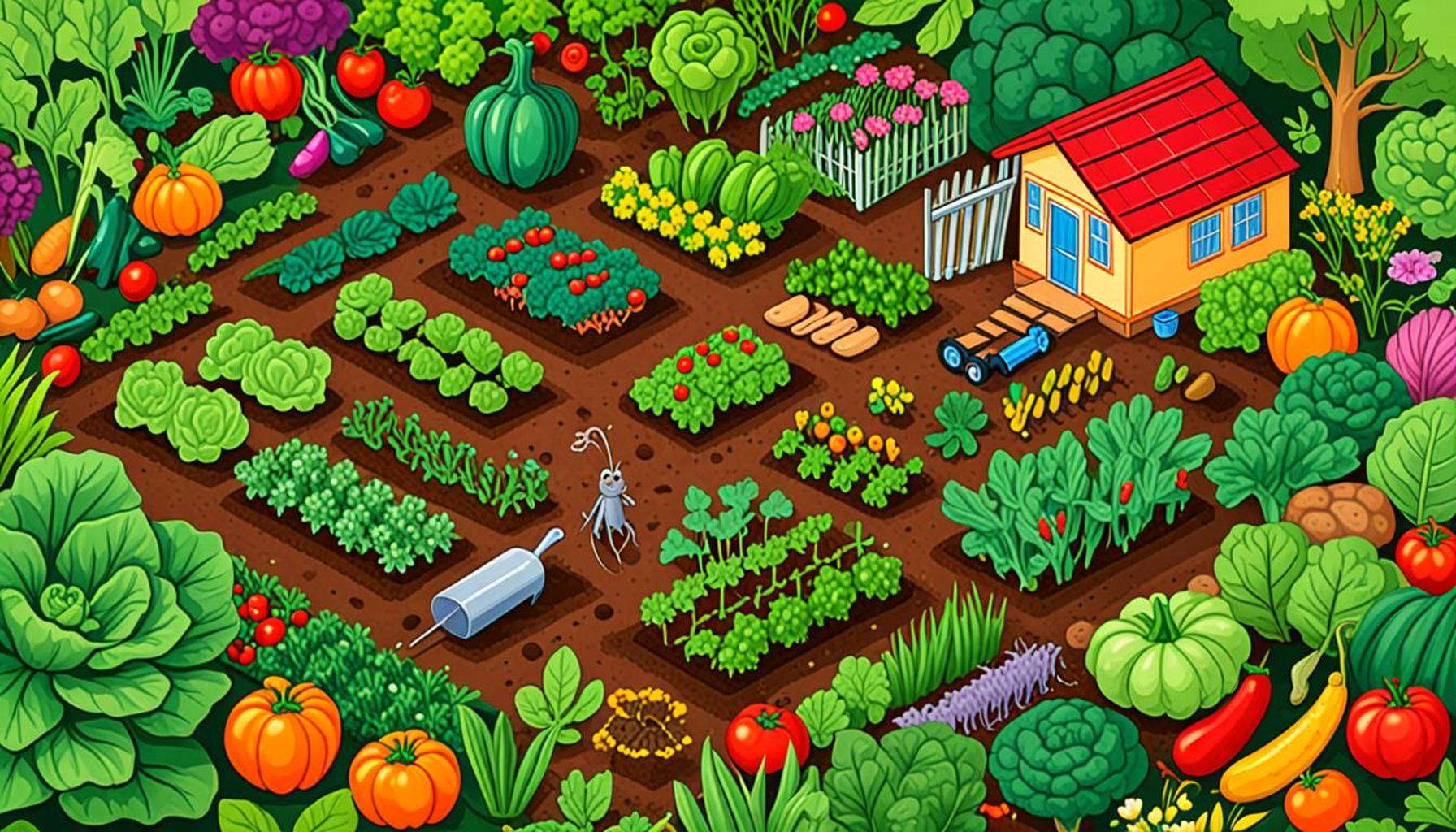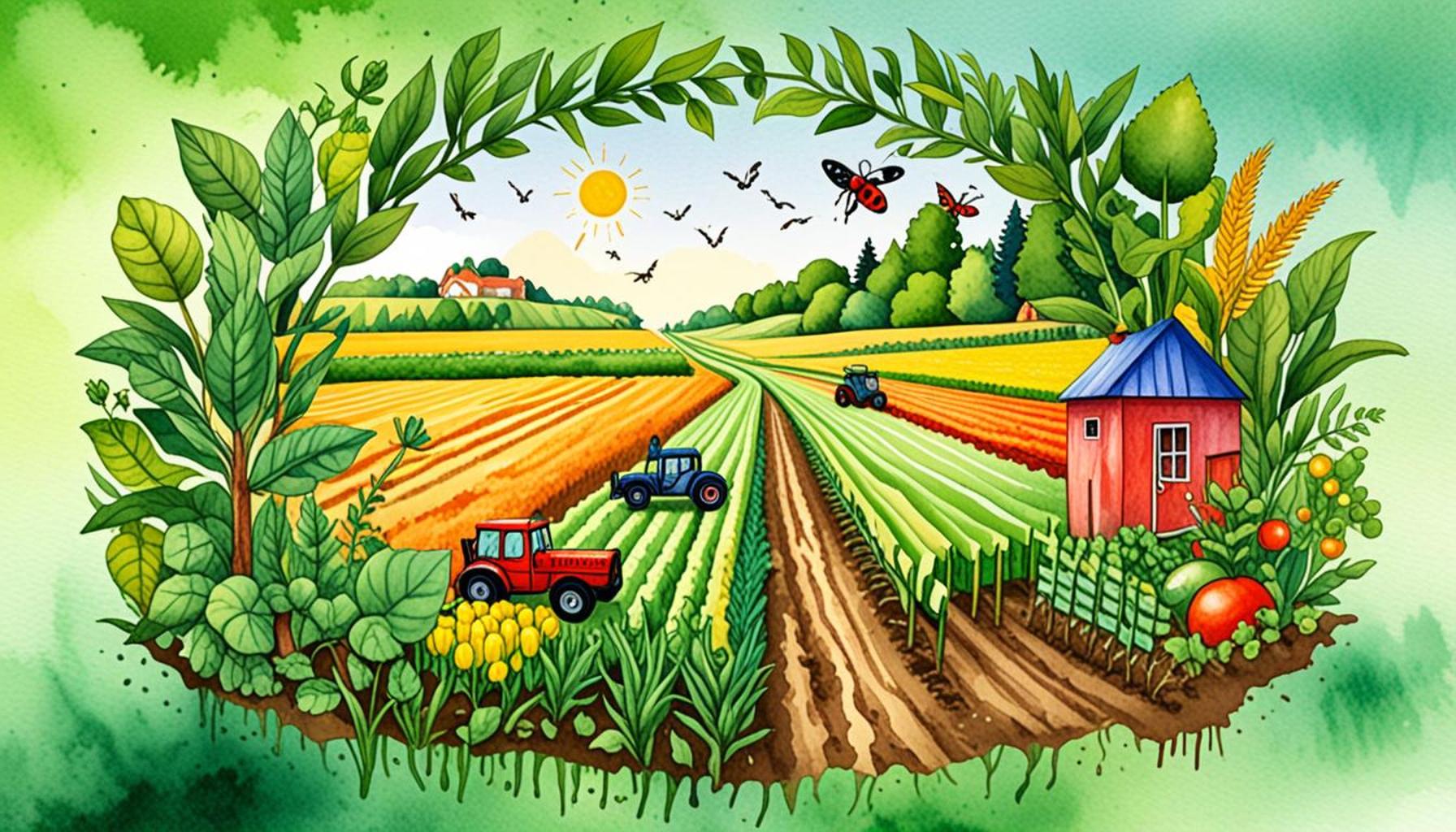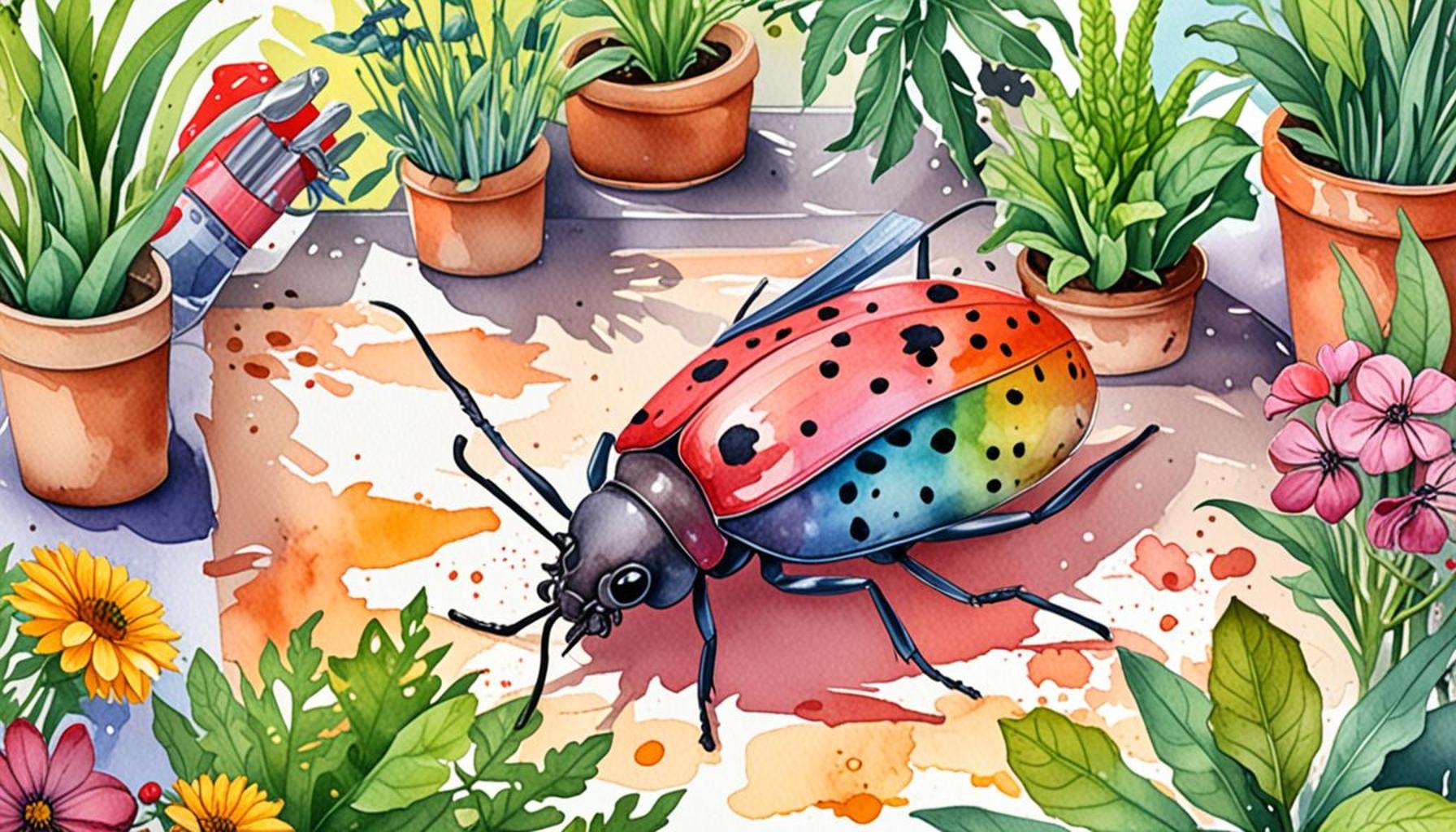The Importance of Early Pest Identification for Gardening Beginners
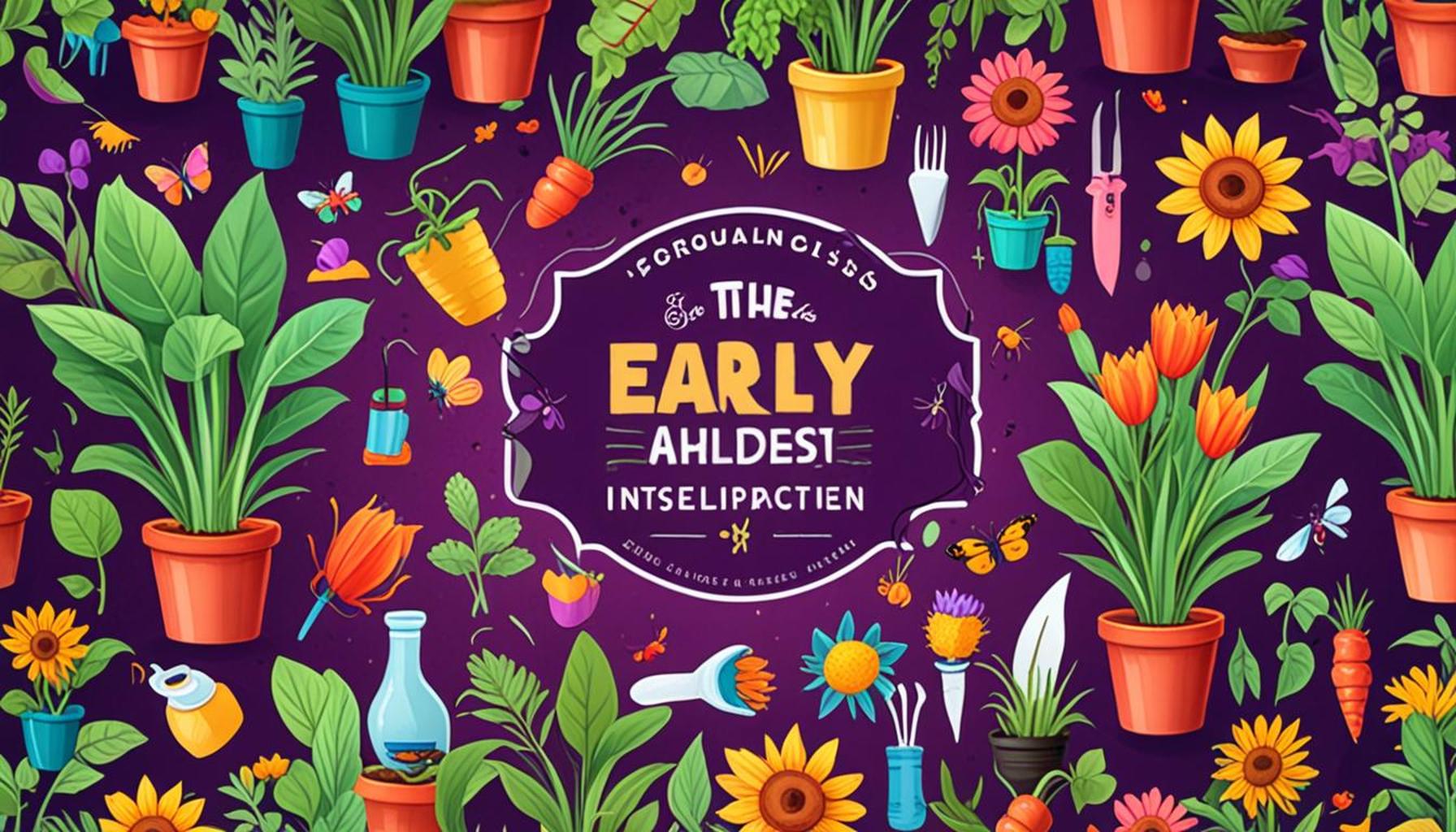
Understanding Pest Identification
For gardening beginners, the journey to cultivating a vibrant garden can be filled with unexpected challenges. One of the most critical skills to develop is the ability to identify pests early. Early detection can mean the difference between a flourishing garden and a dented dream.
Why Early Identification Matters
Recognizing pests swiftly allows gardeners to take effective measures. Consider the following benefits:
- Preventing Major Infestations: Timely identification helps in controlling pest populations before they escalate. For example, if you spot a few aphids on a young plant, acting quickly can prevent them from multiplying into hundreds, which can destroy entire crops.
- Protecting Plant Health: Early action can save your plants from severe damage. Pests like the cabbage worm, if allowed to thrive, can decimate leafy greens, leading to significant losses in both appearance and yield.
- Reducing Chemical Use: Identifying pests early often means opting for organic solutions over harmful pesticides. Not only is this beneficial for the environment, but it also makes your produce safer to consume and cuts down on chemical residuals in your garden.
In the United States, common pests such as aphids, spider mites, and whiteflies can wreak havoc if left unchecked. Each of these pests has unique signs and symptoms, making early detection crucial. For instance, aphids typically cluster on the undersides of leaves, while spider mites leave fine webbing between stems and leaves, indicators that should not be ignored.
Essential Tips for Beginners
As a budding gardener, understanding your plants’ needs is vital. Here are some effective strategies to enhance your pest identification skills:
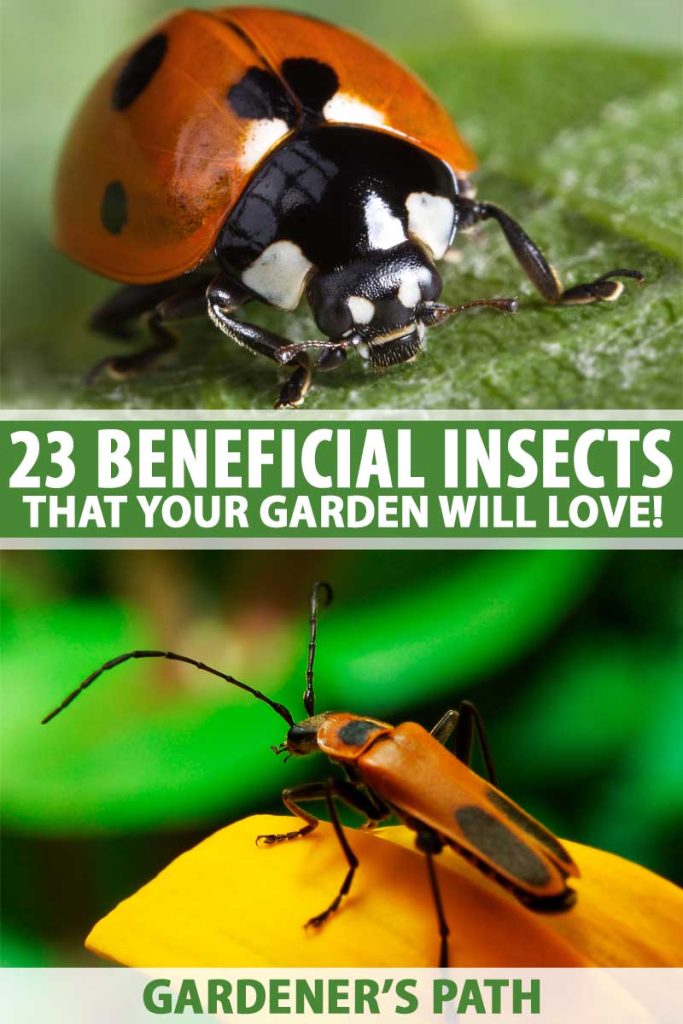
- Regular Inspections: Make it a habit to inspect the leaves and soil of your plants weekly. Look for signs of discoloration, drooping, or unexpected spots that might signal the presence of pests or diseases.
- Educate Yourself: Familiarize yourself with common pests and their signatures by using online resources, gardening books, and extension services. The University of California Agriculture and Natural Resources provides excellent guides tailored specifically for different regions.
- Utilize Resources: Leverage mobile apps and local gardening clubs to stay informed. Apps like PlantSnap and Garden Answers allow you to upload images and receive rapid feedback from a community of gardening enthusiasts. Local clubs often host workshops on pest management, giving you hands-on experience in identifying various pests.
By honing this essential skill, novice gardeners can nurture a healthier garden ecosystem, ensuring their green endeavors are both productive and rewarding. Remember, a proactive approach to pest management not only protects your plants but can also enhance your overall gardening experience, making it a delightful journey to learn, grow, and harvest.
DISCOVER MORE: Click here to uncover the benefits of mulching
The Consequences of Ignoring Early Pest Signs
While the allure of gardening may be the fresh vegetables or vibrant flowers that blossom from your efforts, the risks of overlooking early pest infestations can quickly overshadow these rewards. For beginners, each neglected sign can translate into a hurdle that might discourage you from pursuing your gardening passion. Understanding the detrimental impacts of ignoring early pest identification is crucial for sustaining a vibrant and healthy garden.
Understanding Pest Behavior and Their Life Cycle
Every pest has its own peculiar behavioral patterns and life cycles, making it imperative for gardeners to comprehend these traits. For example, the lifecycle of the tomato hornworm is crucial to note; it begins as a small caterpillar that can significantly damage tomato plants in a short span. In its larval stage, this pest can consume leaves at an alarming rate, reducing photosynthesis and ultimately harming plant growth. By the time you notice the telltale signs—a few chewed leaves—their population may already be on the rise, leading to severe damage.
Understanding these growth patterns can help you anticipate when pests are likely to appear and how to prepare for them. For instance, many aphids are most active during warmer months and reproduce at an astonishing rate, which means their populations can explode if left unmonitored. Every gardener should arm themselves with this knowledge to enact preemptive strategies.
Common Indicators of Pest Activity
New gardeners often find themselves questioning what signs signify pest activity. Recognizing the symptoms early can help in rapidly initiating control measures, preventing escalation. Here are some key indicators of pest presence:
- Leaf Damage: Look for holes, discoloration, or curled leaves. These can be signs of larger pests such as caterpillars or beetles.
- Sticky Residue: Often produced by aphids or whiteflies, this substance, known as honeydew, is a clear indication of infestation. It can lead to further issues, such as sooty mold on your plants.
- Webbing: Fine webbing between leaves typically indicates spider mite activity. If you see this, it’s crucial to act immediately, as spider mites can multiply swiftly and exert significant damage.
- Unexpected Wilting: Plants that suddenly wilt despite adequate watering might be battling root-feeding pests like nematodes, which can be particularly insidious.
By familiarizing yourself with these warning signs and their implications, you are better equipped to approach the challenges of gardening proactively. Mastering early pest identification not only protects your plants but also enriches your overall gardening experience. The earlier you can respond to these warnings, the less damage you’ll face, ensuring your garden continues to thrive.
The Importance of Early Pest Identification for Gardening Beginners
Early pest identification is a crucial aspect of gardening that cannot be overlooked, especially by beginners. Understanding the type of pests that may invade your garden and recognizing their presence early can make a significant difference in your gardening success. Rapid recognition of pests allows for timely and effective interventions, ultimately saving your plants from serious damage. Inexperienced gardeners often face the challenge of differentiating between beneficial insects and harmful pests. For instance, ladybugs are beneficial as they feed on aphids, while aphids themselves can wreak havoc on your plants. By learning to identify these insects, gardeners can foster a healthy ecosystem in their gardens, which can lead to a flourishing plant life.Additionally, early pest identification aids in application of the correct treatment. When pests are detected in their early stages, targeted approaches such as organic pesticides, companion planting, or natural repellents become more effective. This targeted approach not only minimizes harm to beneficial insects but also reduces the reliance on chemical solutions, promoting a more sustainable and environmentally friendly gardening practice. To further delve into the advantages of early pest identification, take a look at the following table:
| Advantage | Details |
|---|---|
| Timely Intervention | Allows for quick action to prevent pest infestations from worsening. |
| Sustainable Practices | Promotes the use of organic solutions, minimizing ecological damage. |
Knowledge of pest behavior and the ability to spot early signs of trouble can empower novice gardeners to maintain the health and vitality of their plants. Moreover, educating oneself about local pest patterns can provide insights into seasonal challenges, making the gardening experience more enjoyable and productive. Embrace the adventure of identifying and managing pests early, and your garden will thrive as a result.
DISCOVER MORE: Click here to learn all about fruit storage and preservation
Strategies for Effective Early Pest Monitoring
Early identification of pests hinges not only on recognizing their signs but also on implementing effective monitoring strategies. For gardening beginners, developing a systematic approach can vastly improve your ability to combat pest invasions before they spiral out of control. By employing these proven strategies, you can ensure a healthier garden and a more fulfilling gardening experience.
Regular Routine Inspections
Establishing a consistent inspection schedule is pivotal in early pest detection. Aim for regular checks—preferably once a week—during the growing season. This routine will help you familiarize yourself with the growing patterns of your plants and what healthy foliage looks like. Key areas to focus on during your inspections include:
- Undersides of Leaves: Many pests, such as aphids and spider mites, prefer to hide on the underside of leaves, where they are less likely to be disturbed.
- Soil Health: Always assess the soil texture and moisture level. Compacted or overly dry soil can attract root-feeding pests and lead to plant stress.
- Adjacent Planting Areas: Examine nearby plants that can harbor pests, which may eventually migrate to your well-cared-for specimens.
By making these inspections a part of your gardening routine, you bolster your chances for early detection and intervention.
Utilizing Pest-Tracking Technology
For tech-savvy gardeners, various apps and devices can enhance your pest monitoring capabilities. Utilizing mobile applications that specialize in pest identification allows you to instantly verify any suspicious anomalies in your garden. Applications such as “Garden Answers” or “Plantix” let you upload pictures of potential pests or problems, offering instant feedback from a community of expert gardeners. This approach not only ensures timely identification but also provides validation through peer-reviewed advice.
Engaging in Community and Online Resources
The internet is teeming with resources for budding gardeners. Forums, social media groups, and local gardening clubs can serve as invaluable platforms for sharing experiences related to pest identification and management strategies. Furthermore, many extension services, provided by universities and agricultural organizations, offer free access to experts who can help identify and combat local pest issues. Engaging with others can demystify the process of dealing with common pests while providing emotional support during challenging times.
Emphasizing Integrated Pest Management (IPM)
Adopting an Integrated Pest Management (IPM) approach is instrumental for sustainable gardening. This strategy involves understanding pest populations in conjunction with their natural enemies, thereby fostering a balanced ecosystem. For beginners, this means recognizing beneficial insects like ladybugs and lacewings, which can aid in controlling aphid populations. By using methods that combine cultural, biological, and physical controls, you can manage pests effectively while minimizing chemical intervention.
In essence, successful pest identification fosters not just healthy plants but also a harmonious ecological environment. By familiarizing yourself with the basics of pest behavior, implementing regular inspections, leveraging technology, tapping into community wisdom, and applying an IPM philosophy, you can enhance your gardening journey significantly. These proactive measures promise to elevate your experience and yield, making the art of gardening both rewarding and less daunting.
LEARN MORE: Click here for tips on soil preparation
Conclusion
In the realm of gardening, early pest identification stands as a cornerstone for success, especially for beginners venturing into this rewarding endeavor. The proactive steps discussed throughout this article—such as adopting regular monitoring practices, utilizing advanced technology, engaging with community resources, and applying an Integrated Pest Management (IPM) approach—collectively equip novice gardeners with the tools necessary to safeguard their plants from the multifaceted threats posed by pests.
Recognizing the signs of pest activity at an early stage not only minimizes damage but also promotes a sustainable approach to gardening that respects the delicate balance of nature. Moreover, taking advantage of modern pest-tracking technologies and community insights fosters a sense of connectedness, allowing gardening beginners to learn and grow alongside experienced gardeners. This collaborative spirit can be incredibly empowering, turning potential obstacles into invaluable lessons.
As you embark on your gardening journey, remember that cultivating a keen eye for pests can significantly elevate your experience. With persistence, patience, and the right resources, you can transform potential challenges into opportunities for growth. So, equip yourself with knowledge, establish consistent monitoring practices, and thrive in the bountiful world of gardening. Your efforts in the early detection and management of pests will not only yield healthier plants but will also enrich your overall gardening adventure.
